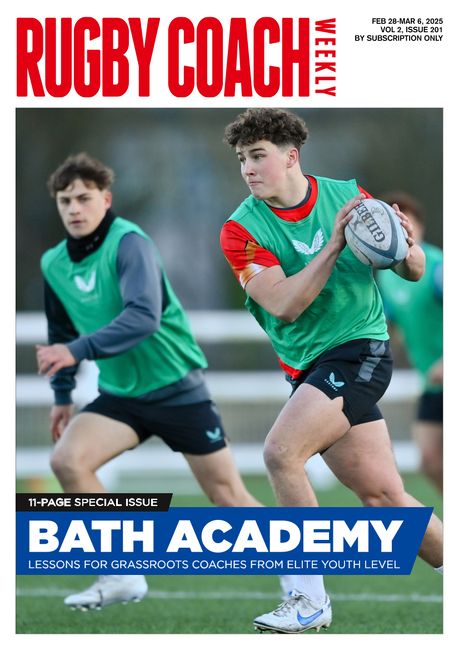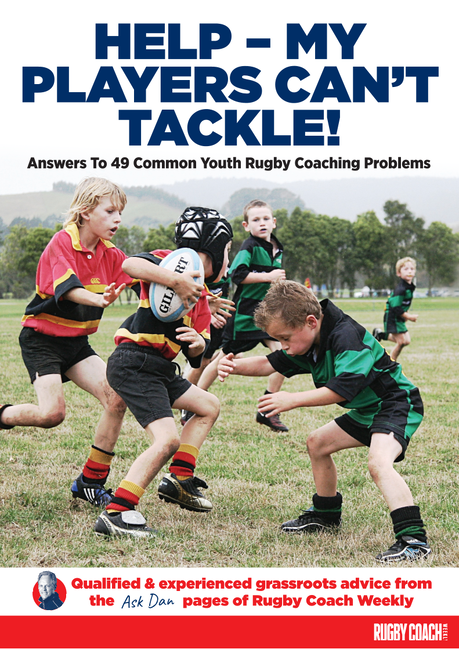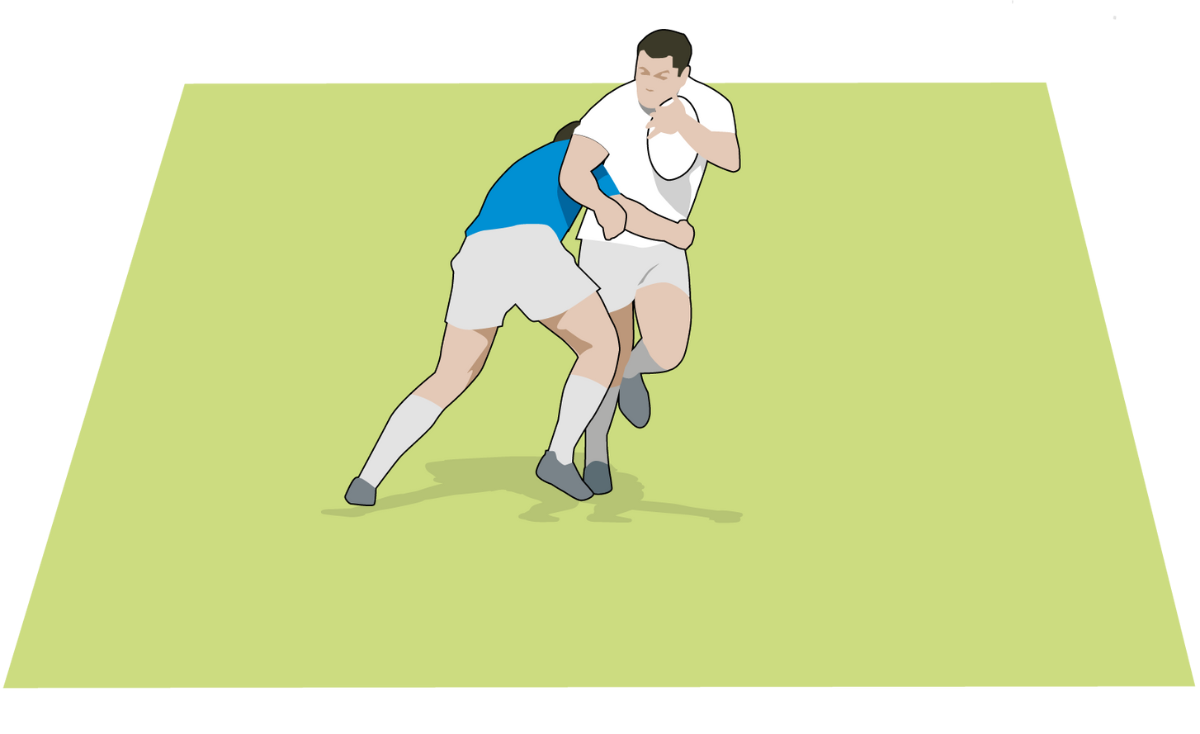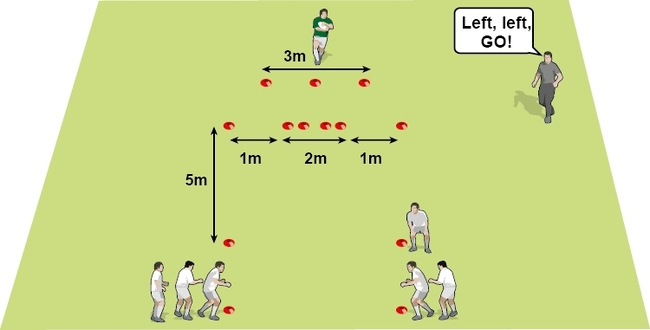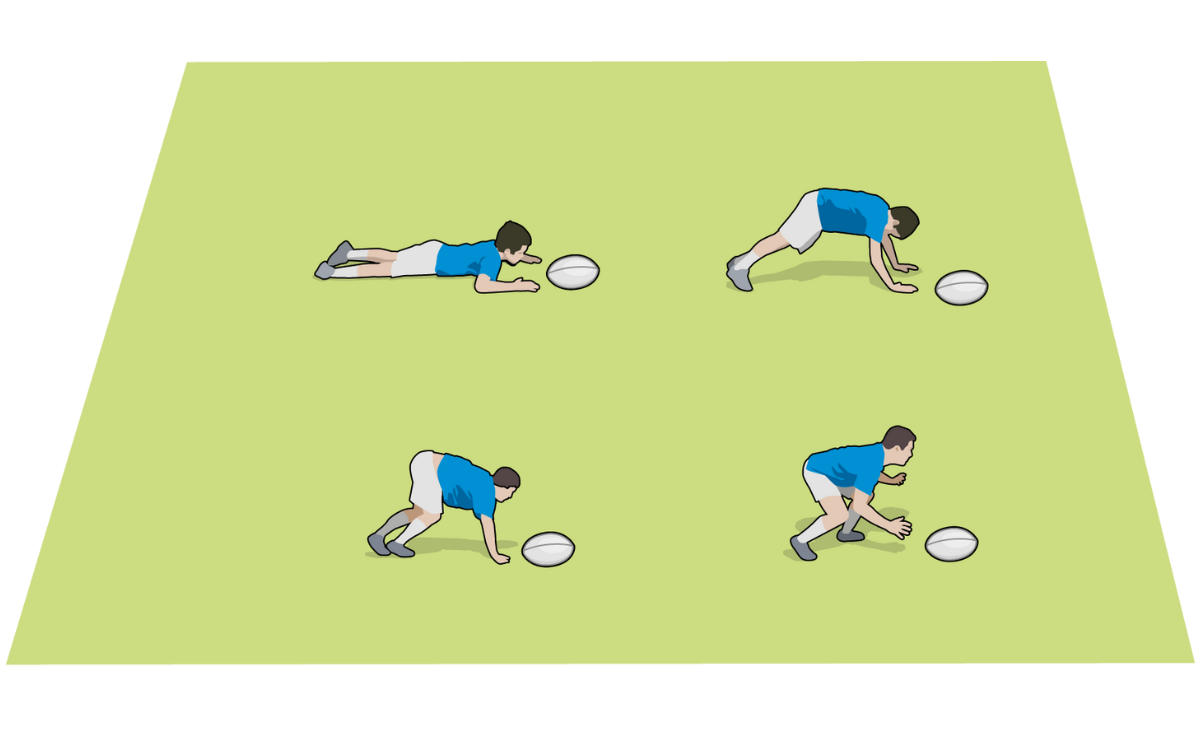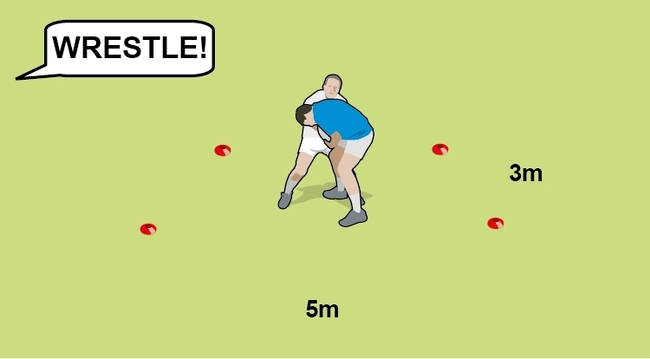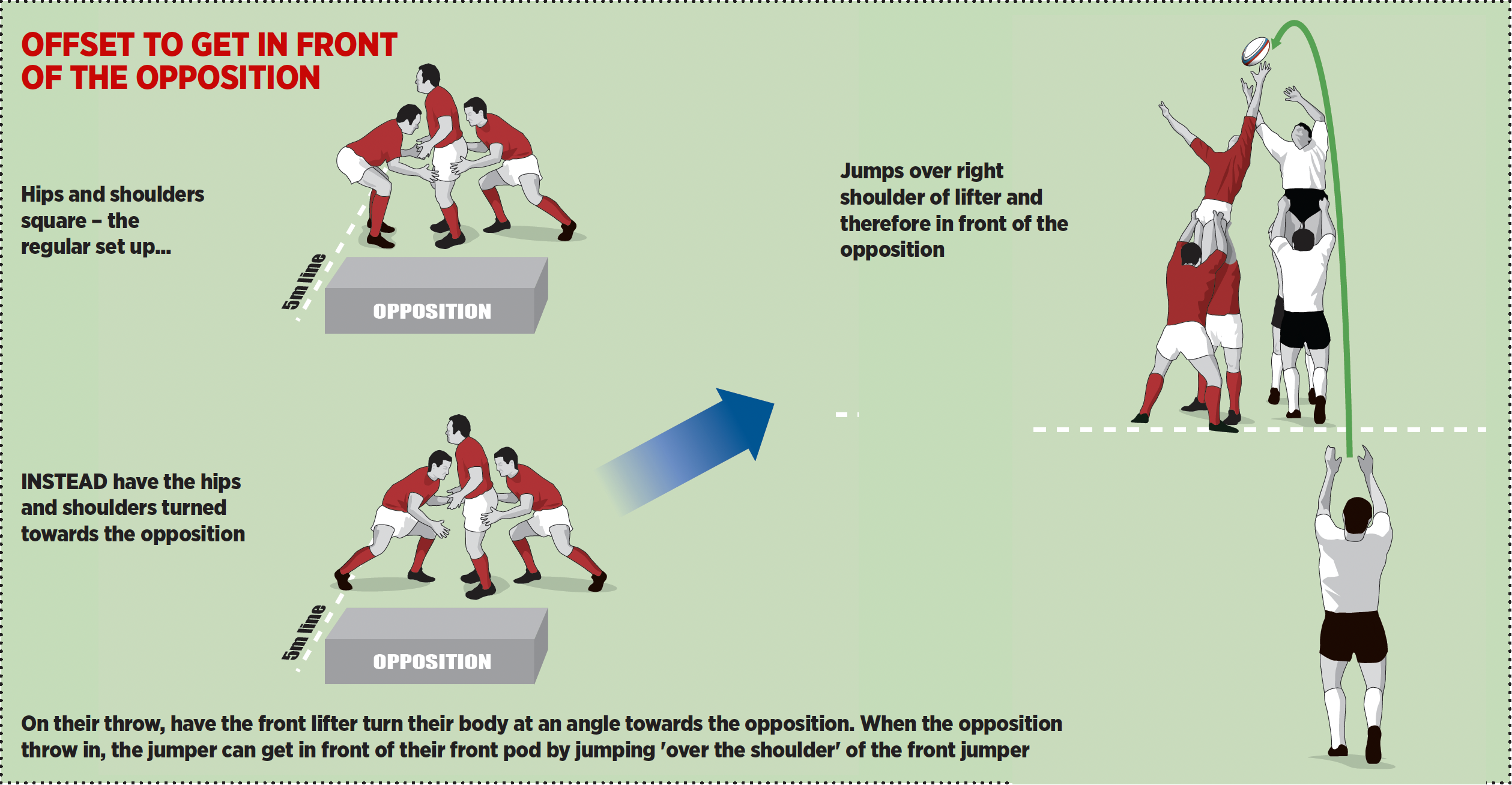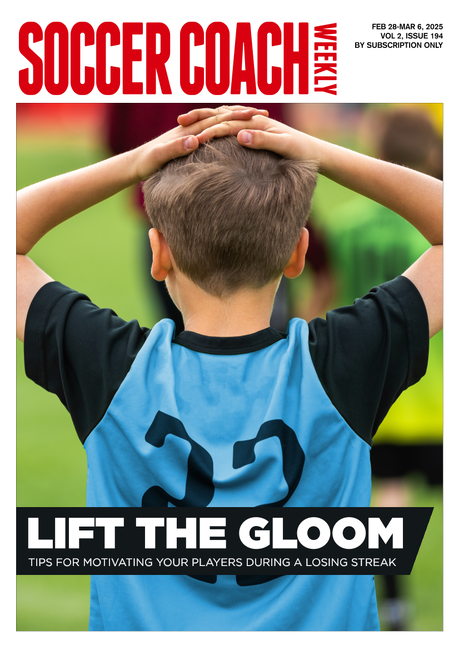Tackle Webinar resources
Here are the slides and links to the tackle webinar.
Here are the slides and links to the tackle webinar.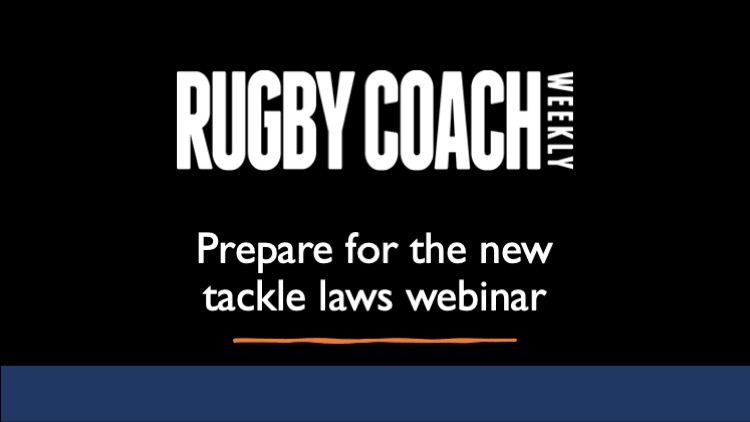
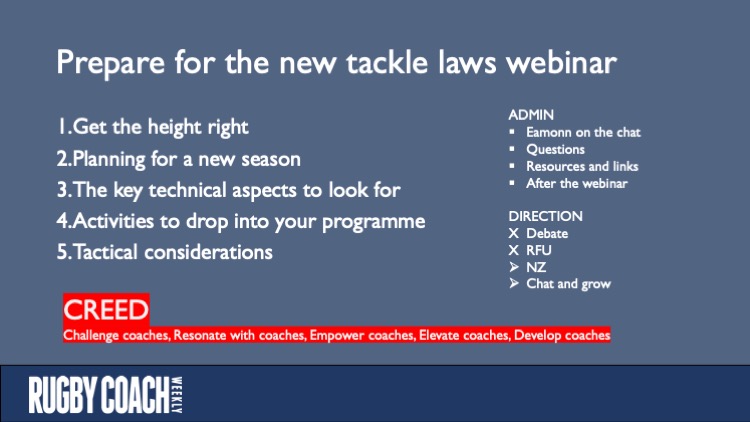
The webinar is not about the debate. While it is fair to say the launch by the RFU could have been a lot better, there has been plenty of evidence gathered which suggests that tackles should be lower.
In New Zealand, their version has the tackle below the sternum, and the second tackler can come in below the shoulders.
In this webinar, we are focused on growing the game, and this change is an opportunity to do this.
Rugby Coach Weekly has a CREED.
- To Challenge coaches in how they approach their coaching
- To Resonate with coaches, understand what your needs are
- To Empower coaches, with materials they can adapt to their needs
- To Elevate coaches, to be their best version
- And to Develop coaches, to become that best version.
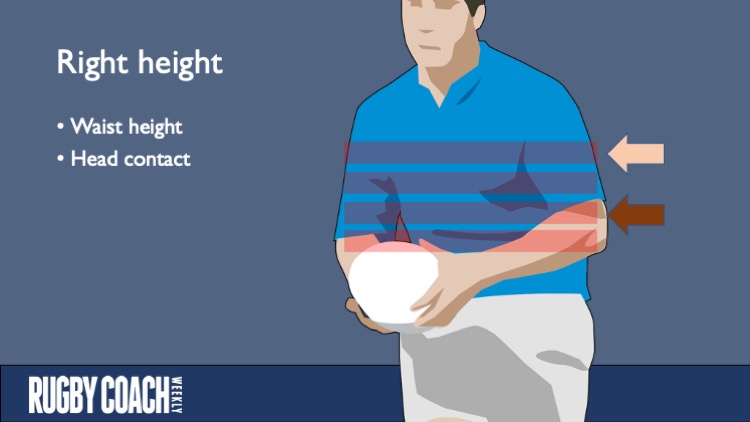
The right height is not certain. The evidence is never going to be conclusive.
The current guidance suggests that the height is likely to be about a hand span lower than the previous height, which is quite significant in one sense.
The reality is that, in the dynamic maelstrom of rugby, the height will be around the dark arrow as a maximum for most referees. And, crucially, we need to support the referee’s judgement on the day.
The right height is aimed to reduce the head-on-head impacts of a tackle, not to prevent other head collisions with, say the hip bone or knee cap, which can equally lead to a concussion.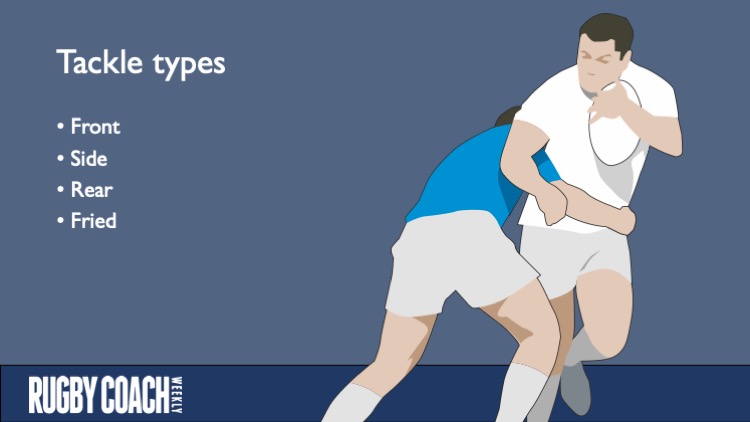
The tackle height will impact mostly on one type of tackle, the front-on tackle. Of course, side-tackles and rear-tackles may well be high, but the dynamics are usually less dramatic in terms of height and danger.
The fried-tackle, which is the front-side tackle will become the most positive from a defensive point of view. The best version will rarely get above the waist.
It is, therefore:
- Safer
- Leads to better outcomes because it will off-balance the ball carrier, reduces their chances for an effective offload (though doesn’t prevent it), and therefore skews the benefits of a support player to take the pass.
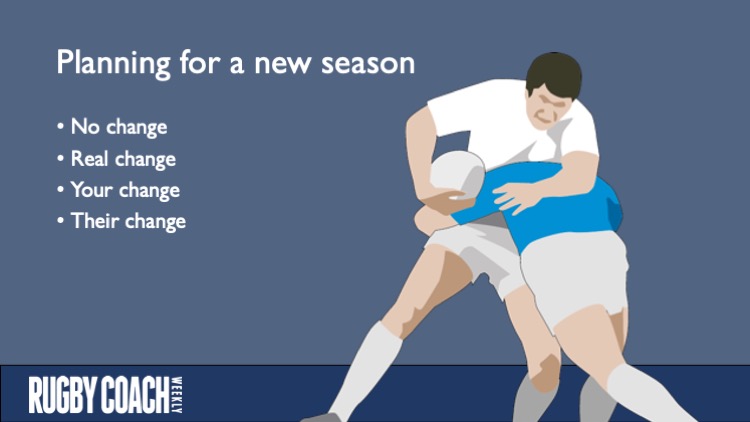
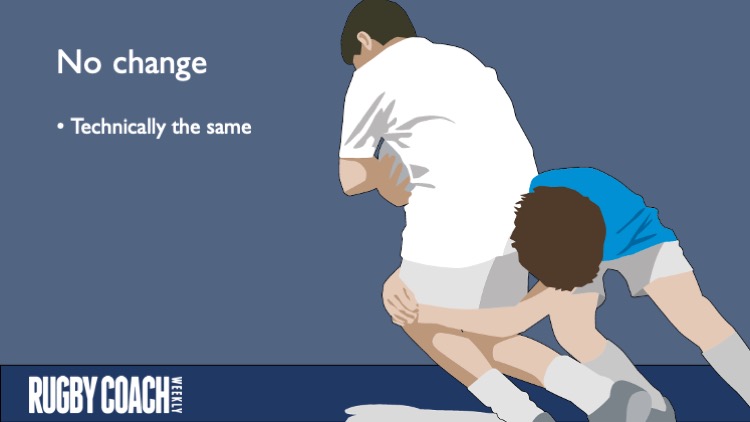
For the most part, there will be no change. Very few coaches deliberately target the chest tackle at grassroots and younger ages groups. Better players may target the ball, which leads to an interesting debate about contacting the ball, and not the ball carrier.
If you are coaching good technique, which is also safe technique, then the tackle height should be either at the waist (above the hip) or thighs (below the hip).
However, there will be real changes in terms of line speed. To get lower, the players will have to dip. To do this, they will have to slow down.
Therefore, though we want our players to reduce the time and space for the attacking team, the players will have to change their behaviours.
The attitude will be less around DOMINANT tackles. That doesn’t mean we don’t want to win the tackle, but we might need to change the language to prevent an over-aggressive, less technique-led and potential high tackle.
That means we need to work harder on the dip. The best way to develop this as a real change is to get the tackler, to drop the same knee as the shoulder that’s going to impact the ball carrier. Working on this so far this season, it has taken much practice for players who aren’t already doing this, especially when using their weaker shoulder.
For the example exercise, go to My best tackle drill.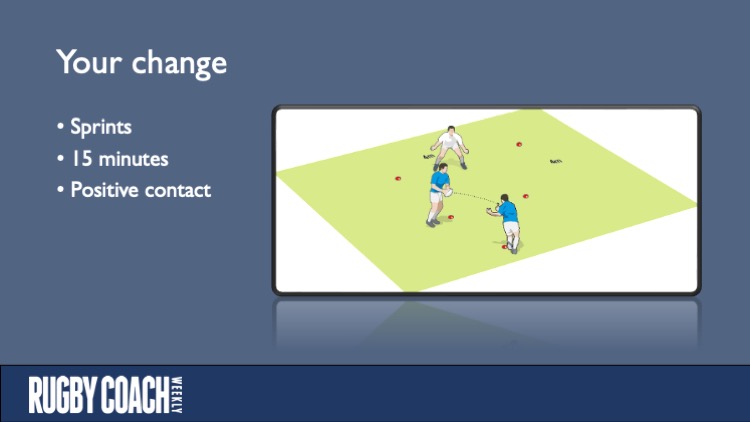
For the coming season, I would use SPRINTS. More on this later.
Given you should only spend 15 minutes of training time on full contact, then five minutes should be dedicated to tackling.
And you should be changing the mindset of players into positive tackling.
The exercise above is Tackle Club Triangles.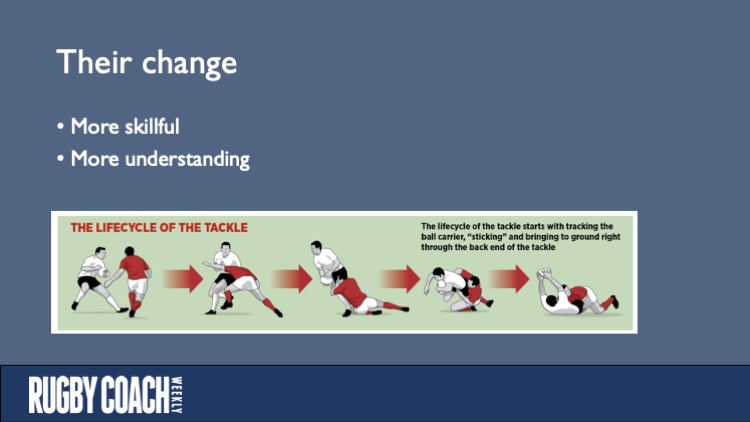
The players need to become more skilful defenders. This isn’t a new idea, and it was around when I did my level 2 course back in 1994!
More skilful defenders understand how a tackle works, from start to end. They are more skilful when they know that the tackle may start imperfectly, perhaps with the foot or shoulder nowhere near the ball carrier.
But as the tackle progresses, the defender manoeuvres themselves into the best position to finish the tackle.
For more on the lifecycle of the tackle, click here.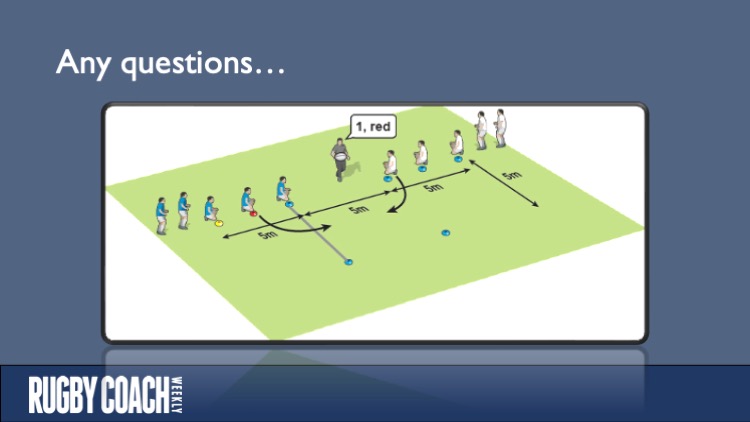
For more on this exercise, click here.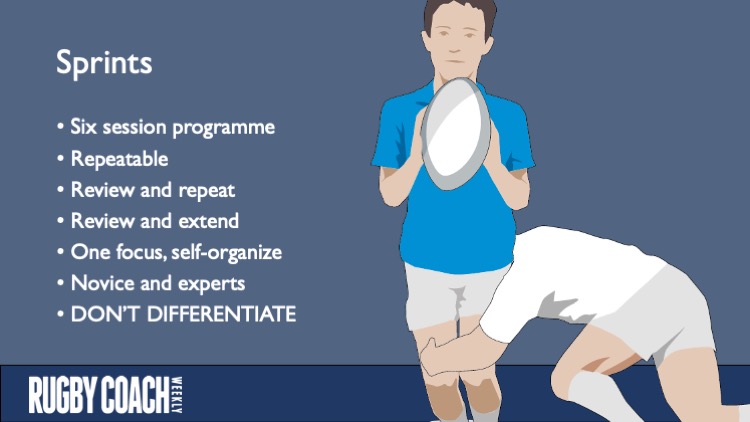
A sprint is a six-session programme. Every session you do a five-minute exercise on tackling, which focuses on just one point of the tackle. The programme is repeatable, so you might just go through the same programme again, but look for better execution.
You can also review the programme and adjust it to make it more suitable for the group. You might want to extend the players.
However, the key is that you continually press the players to be accurate in the tackle. With a focus on one point, the rest of the points will, to a certain extent, self-organise. Even if the other technical aspects aren’t good, as long as they are safe, you don’t adjust your focus.
You may have novices in your group, who have just joined. You might give an opportunity outside the normal training times to spend five minutes in tackle club. Here you can give them extra support to accelerate their learning.
However, in the main sessions, you don’t differentiate the skills they will be learning. Instead, differentiate the task (like the speed) or how it is demonstrated. Each player should receive the same number of repetitions, novice or expert.
This is probably the toughest part of coaching!
Here is a six-week programme, with the key points. You could use the same exercise every week and just focus on the same point, which reduces the explanation time for the exercise.
Here is the sprint with some examples of the common language you can use.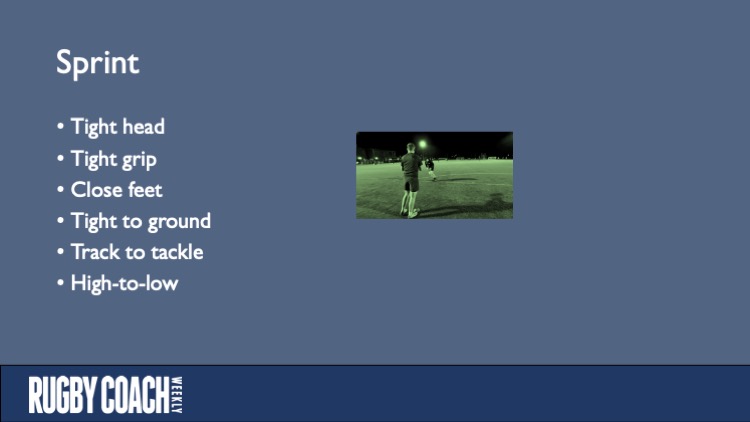
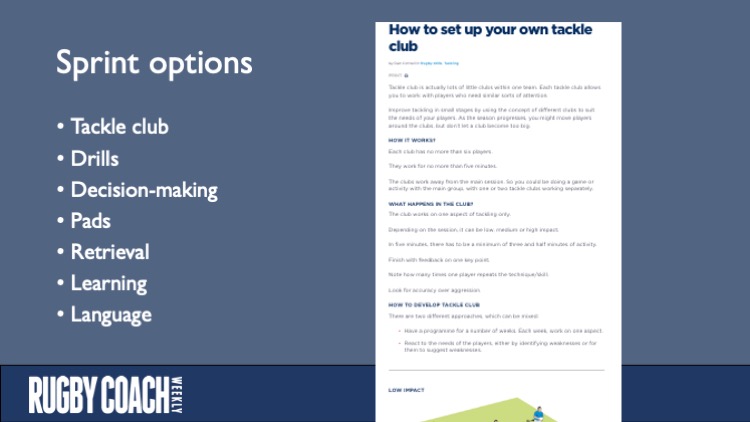
You can run a tackle club alongside the sprint options. See more here.
The sprints will be drills, which means lots of repetitions in a short space of time. You can add in some decision-making, but in the sprints, we are focusing on good technique first and so might not want to load the player with too many options.
Sprints are, therefore, only one part of your defence training, and you can build on the exercises to develop your players’ all-round defence awareness.
Pads are good for reducing some of the contact but should be used technically to improve the players, not to give a soft target to fly into.
Sprints aim to retrieve previous knowledge and then if necessary, build on that. New knowledge can be developed in a separate sprint package.
Learning means changing. The players will become faster, stronger, and more efficient. This might not happen immediately. But they will regress if they don’t keep returning to the basics.
Finally, keep the language they use SIMPLE, REPEATABLE and RELATEABLE.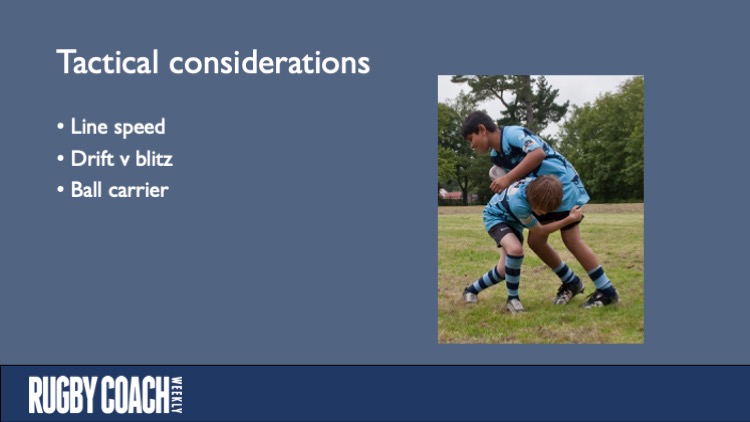
Because the players will have to dip and be more accurate, the speed of the defence coming forward will be reduced.
It is likely that teams will use a drift defence more than blitz.
The ball carrier will have more time but might find they get tackled more often than being able to bump through. They are going to be some more opportunities to pass out of the tackle.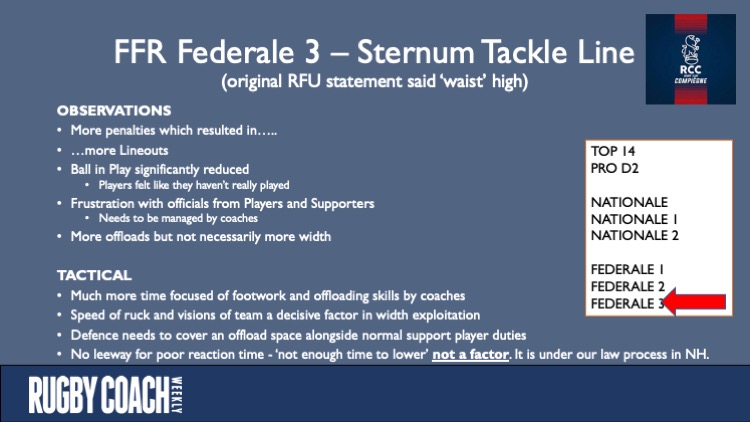
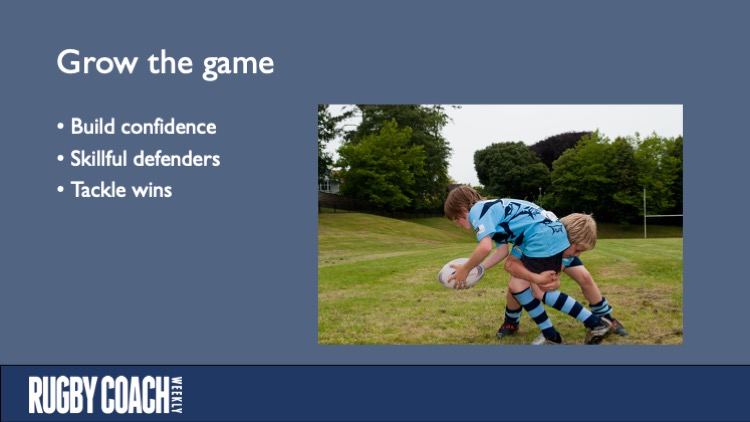
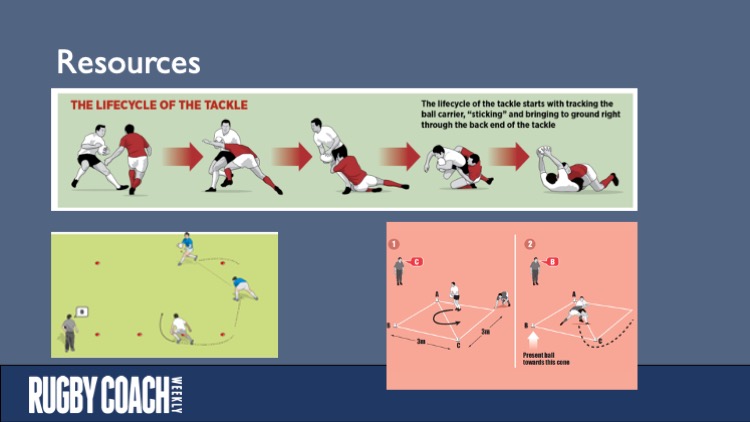
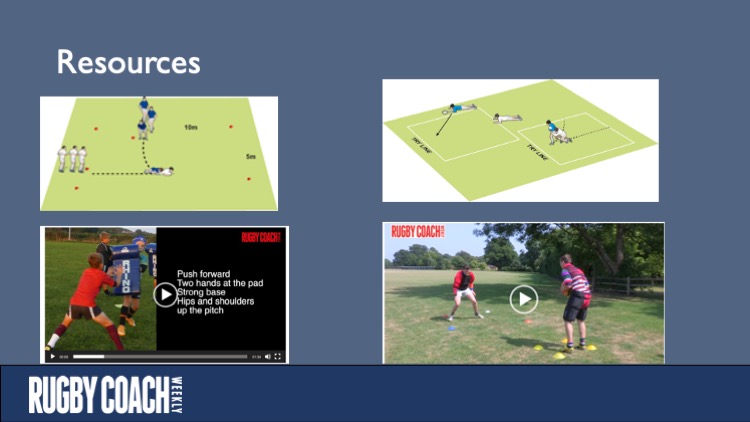

Thank you for reading
to enjoy 3 free articles,
our weekly newsletter, and a free coaching e-book
Or if you are already a subscriber, login for full access
Premium Books
Newsletter Sign Up
Coaches Testimonials

Gerald Kearney, Downtown Las Vegas Soccer Club

Paul Butler, Florida, USA

Rick Shields, Springboro, USA

Tony Green, Pierrefonds Titans, Quebec, Canada
Subscribe Today
Be a more effective, more successful rugby coach
In a recent survey 89% of subscribers said Rugby Coach Weekly makes them more confident, 91% said Rugby Coach Weekly makes them a more effective coach and 93% said Rugby Coach Weekly makes them more inspired.
Get Weekly Inspiration
All the latest techniques and approaches
Rugby Coach Weekly offers proven and easy to use rugby drills, coaching sessions, practice plans, small-sided games, warm-ups, training tips and advice.
We've been at the cutting edge of rugby coaching since we launched in 2005, creating resources for the grassroots youth coach, following best practice from around the world and insights from the professional game.


